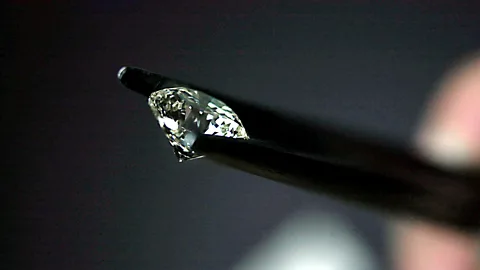The idea that diamonds are rare and scarce has been ingrained in our minds for decades. The term “diamond scarcity” has been used by the diamond industry to drive demand, create a sense of exclusivity, and justify high prices. However, the reality is that mined diamonds are not as scarce as we have been led to believe. The diamond market is more complex than simply scarcity and rarity, and understanding this can shift the way we think about diamonds as valuable commodities. This article will explain why mined diamonds are not scarce and why this misconception has shaped the diamond industry for so long.
The Truth About Diamond Availability
Mined diamonds are not scarce when we look at the overall availability of diamonds in the Earth. While it’s true that diamonds form deep within the Earth’s mantle under extreme pressure and temperature conditions, these diamonds are found in many parts of the world. In fact, the diamond industry has been able to find and extract diamonds from multiple countries for over a century, ensuring that supply continues to meet demand. When we consider the global diamond reserves, there is still a significant amount of untapped resources left to be mined. The perception of scarcity is more of a market construct than a reflection of the true availability of diamonds.
How the Diamond Industry Creates the Illusion of Scarcity
The idea that mined diamonds are scarce is a product of clever marketing by companies like De Beers, which has historically controlled the diamond supply. By limiting the number of diamonds available in the market, these companies created a sense of exclusivity and rarity, thus driving up the price. They also employed the tactic of associating diamonds with milestones such as engagements and weddings, further increasing demand and creating an illusion of rarity. By carefully managing diamond supply, the diamond industry was able to convince consumers that mined diamonds are a scarce and valuable commodity. However, this manipulation of supply doesn’t reflect the true availability of diamonds in nature.
The Role of Diamond Reserves
Mined diamonds are not scarce when we consider the vast reserves of diamonds that remain in the Earth’s crust. Diamond mining companies often focus on specific areas where diamonds are concentrated, but there are still large unexplored areas rich in diamond deposits. The major diamond-producing countries, including Russia, Botswana, Canada, and Australia, have vast diamond reserves that will continue to be exploited for years to come. Even though the mining process can be expensive and labor-intensive, there is no shortage of raw material available to supply the market. This means that the overall supply of diamonds can continue to meet the high demand from consumers, making the claim of scarcity inaccurate.
Mined Diamonds vs. Lab-Grown Diamonds
One of the reasons why the perception of mined diamonds as scarce has persisted is the lack of awareness about lab-grown diamonds. Lab-grown diamonds are chemically, physically, and optically identical to mined diamonds, but they are created in controlled environments using advanced technology. The rise of lab-grown diamonds has further highlighted that diamonds are not as scarce as the industry would like consumers to believe. These diamonds are produced in laboratories, using methods that mimic the natural conditions under which diamonds are formed. The increasing availability of lab-grown diamonds suggests that mined diamonds are not rare and can be produced in abundance, whether through traditional mining or modern technology.
Mined Diamonds Are Not Scarce, But Prices Are High
While it’s clear that mined diamonds are not scarce, the high prices associated with them remain. This is not due to a lack of supply, but rather because of the costs involved in the mining and distribution processes. Diamond mining requires significant investment in equipment, labor, and resources to extract the diamonds from the Earth. Additionally, the infrastructure required to process, cut, and distribute these diamonds contributes to the final price. The costs of marketing and branding also play a role in maintaining the perception of rarity and exclusivity. Thus, even though mined diamonds are not scarce, their prices are high due to the market factors and business practices that shape the diamond industry.
How the Market Forces Affect the Perception of Scarcity
Mined diamonds are not scarce, but market forces contribute to the perception of scarcity. Supply and demand economics play a large role in shaping the diamond market. If demand for diamonds exceeds supply, the price will naturally rise, even if the actual availability of diamonds is not limited. The diamond industry has learned to leverage market forces to create the illusion of scarcity, making lab created diamonds appear more valuable than they may actually be. When demand is kept high through marketing and societal expectations, the prices of mined diamonds can remain elevated, even in the face of abundant supply.
The Environmental Impact of Diamond Mining
While mined diamonds are not scarce, the environmental impact of diamond mining is a real concern. The extraction process involves significant disruption to the environment, including deforestation, water pollution, and the destruction of natural habitats. This environmental damage has led to growing concerns about the ethics of diamond mining, especially as more sustainable and eco-friendly alternatives, such as lab-grown diamonds, become available. The reality that diamonds are not scarce, combined with the environmental consequences of mining, has led many consumers to question whether the traditional diamond industry is worth supporting. As awareness of these issues grows, more people are opting for sustainable alternatives to mined diamonds.
The Future of Diamonds and the End of Scarcity
As the diamond industry evolves, the concept of scarcity is becoming increasingly irrelevant. The rise of lab-grown diamonds, along with the continuing discovery of new diamond reserves, means that diamonds will continue to be widely available for the foreseeable future. As technology advances, it is also possible that diamond production methods will become even more efficient, further increasing supply and reducing costs. The idea that mined diamonds are scarce is now more of a marketing tool than a reflection of reality, and the future of the diamond market lies in a more transparent and sustainable approach to production.
Conclusion: Mined Diamonds Are Not Scarce
The truth about mined diamonds is that they are not scarce. The diamond market has built an illusion of rarity over the years through clever marketing and supply manipulation. While the environmental impact and high prices of mined diamonds are real concerns, the availability of diamonds in the Earth’s reserves is far greater than the industry would like consumers to believe. The rise of lab-grown diamonds, along with the increasing discovery of new diamond deposits, shows that diamonds are not as rare as once thought. As consumers become more informed, the idea of scarcity will continue to lose its grip on the diamond industry, leading to a more accessible and transparent market.





